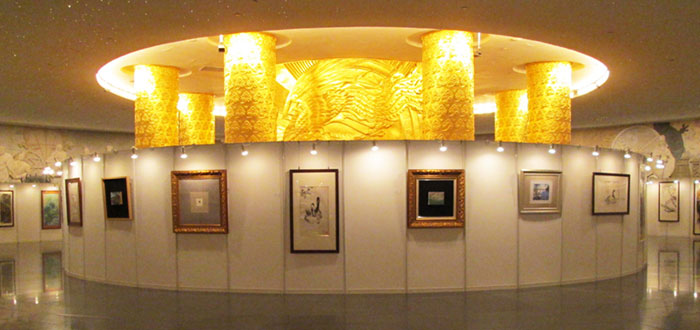An exhibition of art treasures from Bury, Bolton and other northern English towns has become a success in China. Could booming foreign nations offer cash-strapped British galleries a route out of financial crisis?
When Bury paper tycoon Thomas Wrigley amassed a collection of 200 artworks during the Industrial Revolution, England was known as the "workshop of the world".
Bury Art Museum opened in 1901 to house Wrigley's fine collection.
But the industrial boom is now long gone. Like others across the country, the council-run gallery has faced the prospect of funding cuts.
China is now the "workshop of the world".
Industrial barons
So the jewel in Wrigley's collection, JMW Turner's sublime Calais Sands, has been dispatched, along with around 80 other artworks from Bury and 18 other north-west galleries, on a money-spinning six-city tour of China.
The venture was put together by Bury Art Museum manager Tony Trehy, who saw that art collected by industrial barons across the North West of England could be a big draw overseas.
He corralled other galleries to put their "greatest hits" together and head east.
"Put it this way," Mr Trehy says. "It's sufficiently lucrative that people have stopped talking about cutting us."
The exhibition is titled Toward Modernity: Three Centuries of British Art. As well as the Turner, it includes works by Constable, Lowry, Henry Moore and Lucian Freud, culled from collections in Chester, Carlisle, Salford and Stalybridge.
Chinese galleries pay to host the exhibition, which Mr Trehy is now hoping to take to other countries, and which could provide the template for further themed exhibitions.
"Assuming we can do it on a regular basis, it becomes a significant new source of funding for museums," he says.
Uproar over Lowry
While local council cuts are forcing some galleries and museums to reduce staff and opening hours, Mr Trehy believes income from foreign tours could eventually entirely replace public funding for some such institutions.
"If you've got the right works, if you've inherited the right artists from the Victorians or whoever, it is a licence to print money basically," he says.
"We're in negotiation with various museums in Japan and Taiwan, we're just about to start looking at making proposals to the Americans. I've had meetings in the Gulf about working with Emirates museums, but they're only exploratory meetings.
"The British Council are now talking about Brazil for the future because of the World Cup and Olympics."
Bury Council caused uproar in the art world in 2006 when it sold an LS Lowry painting to plug a budget deficit. The idea of taking a picture on tour is that "rather than sell it, we can essentially rent it", Mr Trehy says.
Foreign touring exhibitions are nothing new, but he says this is the first time it has been done by a consortium of regional British museums rather than a national institution with an established global brand, such as the Tate, British Museum or V&A.
"I think economic circumstances have made us more efficient and entrepreneurial," says Emma Varnam, head of culture for Tameside Council, which has contributed four works to Toward Modernity.
She runs the Astley Cheetham Art Gallery in Stalybridge, which was built in 1901 to house the collection of cotton mill heir John Frederick Cheetham. The gallery is a member of the new Greater Manchester Museums Group.
David ElliottBritish Council"China is building museums every week, major things, they're huge”
http://www.bbc.co.uk/news/entertainment-arts-22387987

No hay comentarios:
Publicar un comentario